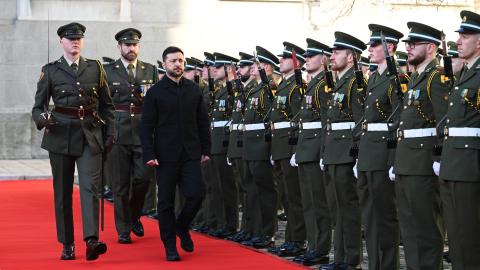Everyone -- certainly every reader of National Review -- knows America’s public schools are a disgrace. He or she also knows that, barring a few elite institutions such as Harvard, our higher education is headed over a fiscal cliff. While Glenn Reynolds’s book is by no means the first to address these crises and offer solutions, it ranks as one of the best. Its author, a professor of law at the University of Tennessee and creator of the news-and-comment website Instapundit, recognizes that using the new technology of the Internet to solve the problems that beset our schools and universities might liberate today’s students from their current educational catastrophe.
Reynolds begins by surveying the dolorous statistics detailing that catastrophe. He points out that while education spending per K–12 pupil in America has climbed in constant dollars from $1,214 in 1945 to over $10,000 in 2008, scholastic achievement has largely flatlined since the 1970s, with U.S. students ranking 14th in the world in reading, 17th in science, and 25th in math. Not a stellar record for a world superpower.
Economist Mark Perry has calculated that, from 1978 to 2011, college tuition has risen 7.45 percent annually, or nearly twice as fast as the Consumer Price Index -- and two percentage points faster than health-care costs. At the same time, 50 percent of college graduates aged 25 or younger are today unemployed or holding down jobs that don’t require a college degree, such as working as janitors or as baristas at Starbucks. Yet recent graduates start their adult lives with an average of $29,400 in college loans, a figure that easily swells to six figures if they push on to graduate school.
So far, so familiar. Where Reynolds’s book enlightens is in analyzing this growing dysfunction in historical terms. In his account, the key villain is none other than the redoubtable education reformer Horace Mann, who, after a visit to Germany in the mid-19th century, began pushing the Prussian model for America’s public schools. “Men,” Mann liked to say, “are cast-iron but children are wax” -- to be molded according to a state-directed curriculum with centralized control and uniform teaching methods (even though both of Mann’s children were homeschooled).
Mann’s dream of a state-directed curriculum never materialized, but the rigid uniform model has survived as the template for public schools ever since. “Like a factory,” Reynolds writes, “[the school] runs by the bell. Like the machines in a factory, desks and students are lined up in orderly rows” -- while the subjects, textbooks, and exams are all the same, forcing students of differing abilities and tastes to fit into a single mold.
Soon after Mann’s time, a similar German model took over for universities -- starting with my alma mater, Johns Hopkins -- with a decisive shift of emphasis from teaching to research. The effect was instantaneous, and would be long-lasting. Whatever the intellectual feast such a campus provided for scholars, researchers, and grad students, it moved training the young mind to a lower level of priority -- and raking in dollars to sponsor and expand research to one of the highest. The result for universities was what we see today: an obsession with getting money instead of educating students -- an ironic result for institutions that tout themselves as “nonprofits” and as bastions of an anti-capitalist ideology. The result for schools was the creation of an environment in which real learning is more and more a matter of accident than of design. A Prussian educational regime works when there’s Prussian-style discipline to go with it; and rigorous rote training at least fed minds, even the most unwilling, with information. But since the 1960s, both have gone by the boards, and what we’re left with now is for the most part chaos, even a deadly chaos. No wonder there’s been a flight to homeschooling and online education (as someone has pointed out, no one gets shot or knocked up at an online school).
Those refugees may be instinctively fleeing another recent historical phenomenon. Decades of jamming kids together and segregating them from the adult world, Reynolds points out, “also created that dysfunctional modern creature, the ‘teenager.’” Instead of being places of learning and instruction, schools have become seedbeds of a perpetual adolescence, driven by a toxic “peer culture” in which partying and hooking up are more important than getting a job or straight “A”s (adult-like activities left to geeks and nerds). Our schools now breed infantilized teens who have to be coddled, cosseted, herded, and babysat, and who turn up at colleges and universities all too ready to extend that perpetual adolescence as long as someone, especially the federal government, covers the tuition.
What’s Reynolds’s answer? Like other sensible reformers, he would lean heavily on the Internet to lower costs, expand opportunities, and allow for customization of the learning package, including schooling at home. The overall goal would be to integrate “the new school” with the priorities of the adult world, instead of concern over who just sexted whom.
Reynolds points to his daughter, who discovered early in the ninth grade that, out of the eight-hour school day, barely an hour and a half involved actual learning. So instead of pushing on to tenth grade, she enrolled online in advanced-placement courses that were more time-efficient and had higher-quality teachers than anything she was going to encounter in the bricks-and-mortar school. Reynolds writes: “The flexibility also allowed her to work three days a week for a local TV-production company, where she got experience in research and writing for programs shown on the Biography Channel, A&E, etc. . . . And she still managed to graduate a year early, at age 16, to head off to a ‘public Ivy’ to study engineering.”
One weeps for all the young people out there who are like Reynolds’s daughter, but are trapped in an education system that would see a story like hers not as an inspiration for reform but as an existential threat to be resisted with the same vigor with which it fights school vouchers -- and for much the same reason: Beat back the voucher movement at all costs -- or else we’ll lose kids like her.
Reynolds believes that “these new and innovative approaches can take place within the context of publicly funded education,” if educators will simply embrace them. That seems wildly optimistic. His prediction that the entire system will in fact have to collapse before it will change seems more on the mark. But either way, his case for change is compelling, and the data are irrefutable, while an American future without teenagers -- a civilization without Justin Biebers and Miley Cyruses -- is too wonderful to contemplate.


















